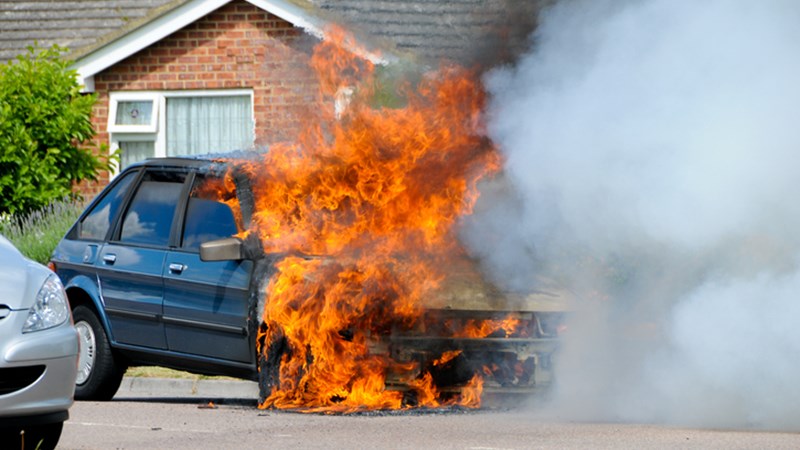The ‘WAM’: also applicable to charging electric cars?
March 2021
In the Netherlands, owners of motor vehicles are obliged to arrange insurance against legal liability which may arise from the use of their motor vehicles. The legal basis thereof is the Motor Vehicle Liability Insurance Act, in Dutch generally referred to as ‘WAM’. The WAM was adjusted to comply with the EU Directive 2009/103/EC of 16 September 2009 (hereinafter: the ‘Directive’) which also covers this topic.
In 2019, the European Court of Justice (ECJ) ruled on a Spanish case in which an electric car parked in a garage whilst charging had caught fire. The ECJ had to address the question of whether this was a case of ‘participation in traffic’ within the meaning the Directive. The ECJ answered this question in the affirmative.[1] Now that the WAM[2] has been adapted to this Directive and also includes the concept of 'participation in traffic', this judgment could have far-reaching consequences for ‘WAM–insurers’.
Prior to the Spanish case, the ECJ had already considered the interpretation of the concept of 'participation in traffic'. In February of this year, however, A-G Bobek expressed his disapproval of the fact finding by the ECJ in a matter concerning the same Directive. According to A-G Bobek, the ECJ should not concern itself with the question of whether a specific accident should be covered by insurance. He argued that this is neither the aim nor the scope of the Directive.[3]
It is remarkable, but not unexpected, that the purchase of electric cars by consumers increased rapidly in 2020. It is even said to have doubled compared to 2019.[4] This fact, together with the recent conclusion of A-G Bobek, gives us reason to analyse the far-reaching ruling of the ECJ from 2019 once more and to ask the question what the Dutch court would do in such a case.
To this end, for a proper understanding of our article, we will first briefly discuss the route taken by the concept of 'participation in traffic' within the meaning of the Directive and the WAM.
This article may be of interest to all kinds of parties involved in insuring motor vehicles. Firstly, because Union law must be interpreted uniformly and, secondly, because situations may arise where parties from several countries are involved and the question of the competent court and applicable law arises.
WAM
The WAM has existed since 1964 and, as mentioned above, has been adapted to the Directive. The WAM stipulates the obligation to insure against legal liability which may arise from the use of motor vehicles.
The WAM serves to protect traffic victims. To be covered by the obligation of the WAM, two conditions must be met: (1) a motor vehicle must be involved and (2) the liability must be related to participation in traffic. We will zoom in on the second requirement.
Participation in traffic: a (brief) overview
When the WAM was introduced, the Dutch legislator already described the interpretation of ‘participation in traffic’ as broad. After all, it must also be understood to include damage caused by the - stationary - insured motor vehicle being parked wrongly.[5] Nevertheless, the question of when there is ‘participation in traffic’ arises regularly. Especially in the discussion whether something is a WAM-risk or an equipment risk. The question is then whether an accident was the realisation of a risk that is connected with the participation in traffic of a certain piece of equipment (e.g. a forklift truck) or of a risk that is in accordance with the use and the work function of the equipment.[6] In the latter case, the WAM does not apply. Case law interpreting ‘participation in traffic’ is often based on a specific case.
In the Vnuk judgment, the ECJ considered for the first time that 'participation in traffic', in view of the objective of protecting victims, relates to any use of a vehicle that corresponds to its usual function. This does not necessarily have to be on public roads, but can also be, for example, on private property.[7] It depends on the circumstances of the case. According to the ECJ, a tractor that was stationary and was used as a generator to water land was therefore not considered to be participating in traffic.[8] However, according to the Dutch Supreme Court, a forklift truck that caused injuries while moving concrete elements did participate in traffic.[9]
Electric car that caught fire
Back to the case of the electric car. With this case the broad interpretation of the concept ‘participation in traffic’ by the ECJ is continued.
The ECJ repeats the principles from the Vnuk judgment. Furthermore, the ECJ considers that it does not matter whether a vehicle is moving or not and whether the engine is running or not. According to the ECJ, parking and standing still during certain periods of time are natural and necessary phases that are an integral part of the use of the vehicle. According to the Court, this also constitutes ‘participation in traffic’ within the meaning of the Directive. The fact that the car had been parked for more than 24 hours did not change this.[10]
Critical note
According to the Court, its ruling is in line with the objective of protecting victims of motor vehicle accidents. However, we wonder whether this judgment does not actually place too much emphasis on the objective of victim protection. As far as we are aware, there were no victims in this judgment.
In addition, the qualification of the loading of a vehicle as being the usual function of the vehicle is not self-evident when one considers the risks inherent in the operation of a vehicle (in traffic). Is parking and charging an electric car still part of the usual function? And where is the boundary? Would the WAM then also apply if someone trips over the cord of a charging station? And what if an electric tool is charging? Should it then be investigated what the last action with the tool was?
In view of the conclusion of A-G Bobek mentioned in the introduction, we do not expect the ECJ to make statements about the scope of the concept of ‘participation in traffic’ any time soon. National case law will therefore become more relevant. It remains to be seen how the Dutch court, in the light of the WAM, deals with the questions that can be asked as a result of the case with the electric car. In any case, it is important for WAM insurers to keep an eye on this development, especially in view of the growing share of electric cars on the market. After all, the insurance obligation remains in force.
* * *
[1] ECJ 20 June 2019, C-100/18, ECLI:EU:C:2019:517.
[2] The Motor Insurance Liability Act (‘Wet Aansprakelijkheid Motorrijtuigen’).
[3] ECJ 23 February 2021, C-923/19.
[4] https://www.trouw.nl/es-beb2038a.
[5] Parliamentary Papers II 1976/77 14281, 1-4 p. 16-17.
[6] HR 8 June 2018, ECLI:NL:HR:2018:877.
[7] CJEU 4 September 2014,C-162/13, ECLI:EU:C:2014:2146; see also a recent judgment of the Rb. Midden-Nederland 23 December 2020, ECLI:NL:RBMNE:2020:5674.
[8] CJEU 28 November 2017, C-514/16, ECLI:EU:C:2017:908 (Rodrigues de Andrade).
[9] HR 8 June 2018, ECLI:NL:HR:2018:877.
[10] CJEU 20 June 2019, C-100/18, ECLI:EU:C:2019:517.








